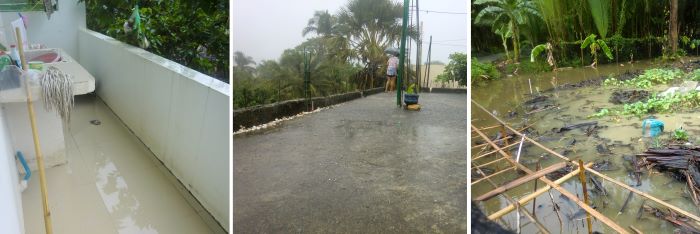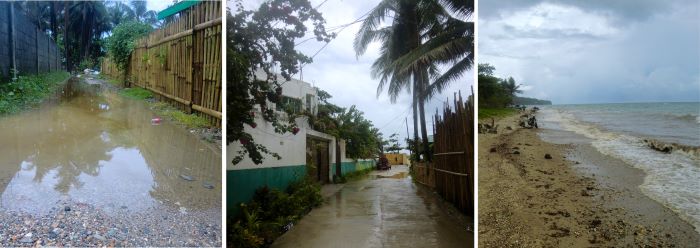Last Updated on October 27, 2024 by Ellen
It rained all day today. We’ve kinda forgotten what that is like.
In fact, throughout our 4.5 years of global wandering, we have planned our route to avoid ‘rainy seasons’ everywhere. And sure enough, most places we’ve gone have been extremely dry. Often, we’ve not seen rain for months straight.
Now that our travel is paused here in Malay, Aklan, Panay, Philippines, due to the COVID-19 pandemic, we will be present for the 2020 southwest monsoon known as ‘Habagat’ locally. Today was just a taste of what the Western Visaya region experiences at this time of year.
Early Habagat season
It is true that we’ve experienced some wet weather during the two tropical storms that have occurred since we arrived in the Philippines last November. And there have been occasional intense cloudbursts too – kind of like afternoons in Florida. But today was a different phenomenon.
This morning the tide was high and the sea was churned up more than we’ve ever seen here. And the wind was coming from the west – almost opposite what we have become accustomed to.
By 10:30 a.m., dark clouds and ominous rumblings of thunder were everywhere. It seemed our resort beach was ‘surrounded’. Around 11:00 a.m. it started raining – and hardly stopped all day.

Our balconies were drenched, the rooftop of our building deep with water. Edenia the manager was up there with an umbrella and broom at one point. Thankfully, no leaks or problems in our apartment. But the vegetable garden was half submerged.
Visibility was poor. Our view of Boracay Island obscured most of the day. Water puddled everywhere. The nearby rivers were high and muddy. Nobody was fishing. There was a brief pause around 4:00 p.m. and I went out for a few photos. It was super hot and humid.

It is now well after midnight. The rain is still coming down hard. The thunder has lessened but water is everywhere. The bullfrogs are in full chorus. Blessedly, the temperature has dropped through the evening. It’s comfortable and great sleeping weather.
Ready for more rain
Habagat season typically runs from late June to October. The good news; although monsoons produce long heavy rains, they don’t usually bring damaging high winds and waves. Unfortunately, typhoon season is pretty much the same as habagat – and typhoons do produce wind and waves and water; sometimes catastrophic.
We are hoping we’ll be lucky and avoid any dangerous weather in the coming months. Indeed, if the rains stay similar to what we had today, habagat will be a somewhat welcome change from the scorching sun we’ve sought in most places.
As always, be thankful and generous, happy trails, & more beer.
Life is NOW!
Thanks for reading, “Early Habagat season in the Western Visayas.”
Earth Vagabonds advocate for travel when international borders reopen.
See our list of destinations since 2015, or visit our COVID-19 section to plan your next trip!

